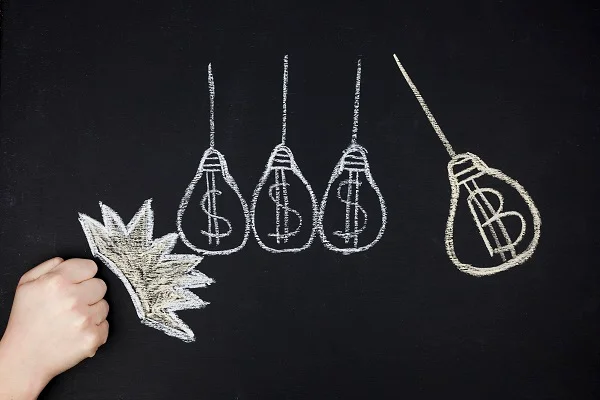In the ever-evolving landscape of real estate, business ventures, and personal investment, traditional financial routes are no longer the only path to success. Entrepreneurs, homebuyers, and small business owners are increasingly turning toward creative financing as a solution to bypass conventional lending restrictions, improve cash flow, and pursue opportunities that might otherwise seem out of reach. This article explores what creative financing is, how it works, its various forms, and why it’s becoming a powerful tool in today’s economic environment. We’ll also look at real-life scenarios where it has transformed challenges into opportunities.
What is Creative Financing?
At its core, creative financing refers to non-traditional methods of acquiring funds to finance a purchase, investment, or business initiative. Unlike standard loans from banks or mortgage lenders, these financing strategies involve unique terms, flexible structures, and often a higher level of negotiation between parties. In most cases, creative financing strategies are used when traditional bank loans are either unavailable or undesirable. These methods allow buyers or investors to leverage assets, negotiate directly with sellers, and structure deals in ways that suit both parties’ needs.
Why People Use Creative Financing
1. Limited Access to Traditional Lending
Many individuals, especially new entrepreneurs and first-time homebuyers, struggle with strict bank requirements such as high credit scores, large down payments, or extensive documentation. Creative financing offers a lifeline by allowing deals to proceed even when conventional criteria aren’t met.
2. Flexible Terms
Banks and financial institutions tend to have rigid repayment structures. In contrast, creative finance deals often involve customized terms that can include deferred payments, low or no interest, or payment schedules based on performance milestones.
3. Faster Closings
Since many creative deals are made directly between the buyer and seller or involve private lenders, the approval process can be significantly quicker. This allows buyers to seize opportunities swiftly, especially in fast-moving markets like real estate.
4. Leverage and Control
Creative financing enables buyers to control more assets with less capital. Techniques like lease options or seller carrybacks can allow an investor to gain equity in a property without an upfront down payment.
Types of Creative Financing
Seller Financing (Owner Financing)
One of the most common methods, seller financing occurs when the seller acts as the lender. The buyer makes payments directly to the seller based on mutually agreed terms. This arrangement eliminates the need for a traditional mortgage and allows both parties to negotiate flexible conditions.
Lease Options
In a lease option, the buyer leases a property with the option to purchase it at a later date, usually at a predetermined price. This strategy allows individuals to lock in a price while improving their credit or saving for a down payment.
Subject-To Deals
In a “subject-to” transaction, the buyer takes over the seller’s existing mortgage payments without formally assuming the loan. The mortgage stays in the seller’s name, but the buyer gets the property title. This approach is especially popular during times of rising interest rates.
Private Money Lenders
Private individuals friends, family, or professional investors can offer loans with more flexible terms than banks. These loans are often based on relationships and mutual trust, and they can be negotiated quickly.
Hard Money Loans
Hard money loans come from private investors or companies and are secured by real estate. They’re often short-term and come with higher interest rates, but they’re useful for quick fixes, rehabs, or flipping properties.
Real-World Examples of Creative Financing
Real Estate Investment
Consider a real estate investor who wants to purchase a property but doesn’t qualify for a bank loan. By using seller financing, the investor negotiates a deal with the homeowner to pay monthly installments over five years, after which a balloon payment completes the transaction. The seller gains steady income, and the buyer gains ownership without upfront capital.
Business Acquisition
A small business owner wants to acquire another local business but lacks the cash for a full purchase. The seller agrees to a structured deal: the buyer pays an initial sum, then continues with profit-based monthly payments over two years. This is a classic case of creative financing unlocking growth potential.
Startups and Entrepreneurs
An entrepreneur developing a tech product may need capital but prefers to avoid giving up equity. By structuring a convertible note with a private investor, they secure early funding with the promise of future equity conversion once valuation increases. Again, this is a smart and strategic use of creative financing.
Risks and Considerations
While creative financing offers numerous advantages, it’s not without its challenges:
-
Legal Complexity: Many of these deals require careful legal documentation. Misunderstandings or poorly drafted agreements can lead to disputes.
-
Due Diligence: As with any investment, thorough research is essential. Buyers must assess risks, confirm ownership, and ensure property or business values are fair.
-
Market Volatility: Economic downturns, changes in interest rates, or shifts in local markets can impact the value and viability of creative financing deals.
-
Moral Hazard: Some investors may use these methods to offload distressed or overvalued assets onto less-informed buyers.
Having a real estate attorney or financial advisor review agreements is a smart move before proceeding with any creative arrangement.
How to Get Started With Creative Financing
1. Educate Yourself
Before jumping into any deal, understand the fundamentals of creative finance. Books, online courses, and mentorship programs can provide valuable insights into structuring deals, understanding contracts, and recognizing opportunities.
2. Build a Network
Your success often depends on who you know. Connect with real estate agents, investors, financial advisors, and private lenders. Networking events, online forums, and mastermind groups can be goldmines for learning and opportunities.
3. Start Small
Begin with a manageable project, such as a small property or a simple seller-financed deal. Use it as a learning experience and build your confidence before scaling.
4. Get Legal and Financial Advice
Work with professionals who specialize in alternative financing. They’ll help you navigate contracts, avoid pitfalls, and ensure your deals are both profitable and compliant.
The Future of Creative Financing
As economic uncertainty continues and traditional lending remains strict, creative financing will likely become even more mainstream. It’s already a favorite tool among savvy investors and entrepreneurs looking for greater flexibility, better returns, and scalable growth. In addition, technology is making it easier to connect with private lenders, draft legal contracts, and analyze deals. From mobile apps to online platforms, the digital revolution is enhancing access to alternative funding sources like never before.
Conclusion
Creative financing isn’t just a buzzword it’s a powerful approach to funding that’s helping people realize their goals without relying on traditional financial institutions. Whether you’re investing in real estate, buying a business, or launching a startup, this strategy offers a customizable, scalable, and often quicker route to success. If you’re facing roadblocks with banks or simply want more control over your deals, it may be time to explore the wide world of creative financing. With the right knowledge, network, and strategy, you can unlock opportunities that once seemed impossible.









